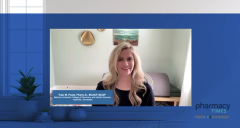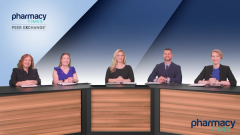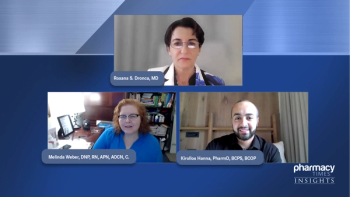
Exploring High-Risk Populations for RSV Complications
Panelists discuss how pharmacists can identify high-risk adults for severe RSV—such as those with chronic conditions or advanced age—by reviewing medication profiles, and how they can overcome barriers like limited awareness and workflow challenges to drive vaccine uptake through education, accessibility, and recent policy-supported coverage.
Episodes in this series

High-risk populations for severe respiratory syncytial virus (RSV) include adults 75 years and older, as well as those 60 years and older with underlying health conditions. These conditions encompass chronic heart or lung diseases, such as chronic obstructive pulmonary disease, end-stage renal disease (especially for patients on dialysis), diabetes with complications, neuromuscular disorders, chronic liver disease, obesity (body mass index > 30), and sickle cell disease. Additionally, residents of long-term care facilities and those who are moderately to severely immunocompromised are also at elevated risk. Identifying these individuals can often be done efficiently in the pharmacy setting by reviewing their medication profiles and prescriptions, which frequently reveal associated conditions.
Pharmacists play a central role in managing RSV prevention through vaccination. Much like with flu, COVID-19, and pneumococcal vaccines, pharmacists are in a prime position to recommend and administer RSV vaccines. Routine interactions with patients—whether in person, on the phone, or through medication counseling—present ongoing opportunities to educate patients about their individual risks and the importance of RSV immunization. Utilizing resources such as the CDC website and vaccine information statements allows pharmacists to provide accurate, accessible information, empowering patients to make informed health care decisions.
However, several barriers remain. Lack of awareness and education—both among patients and pharmacists—is a significant obstacle. Busy pharmacy workflows and the constantly evolving landscape of vaccine recommendations can hinder uptake. To address this, pharmacists must stay informed using trusted resources and training opportunities. On the patient side, foundational tools like vaccine information statements should not only be distributed but also explained clearly. Financial barriers have been eased through legislative measures like the Affordable Care Act and the Inflation Reduction Act, which enhance coverage under Medicare, Medicaid, and commercial insurance. With education and access aligned, pharmacists can substantially improve vaccine uptake in high-risk populations.
Newsletter
Stay informed on drug updates, treatment guidelines, and pharmacy practice trends—subscribe to Pharmacy Times for weekly clinical insights.




















































































































































































































